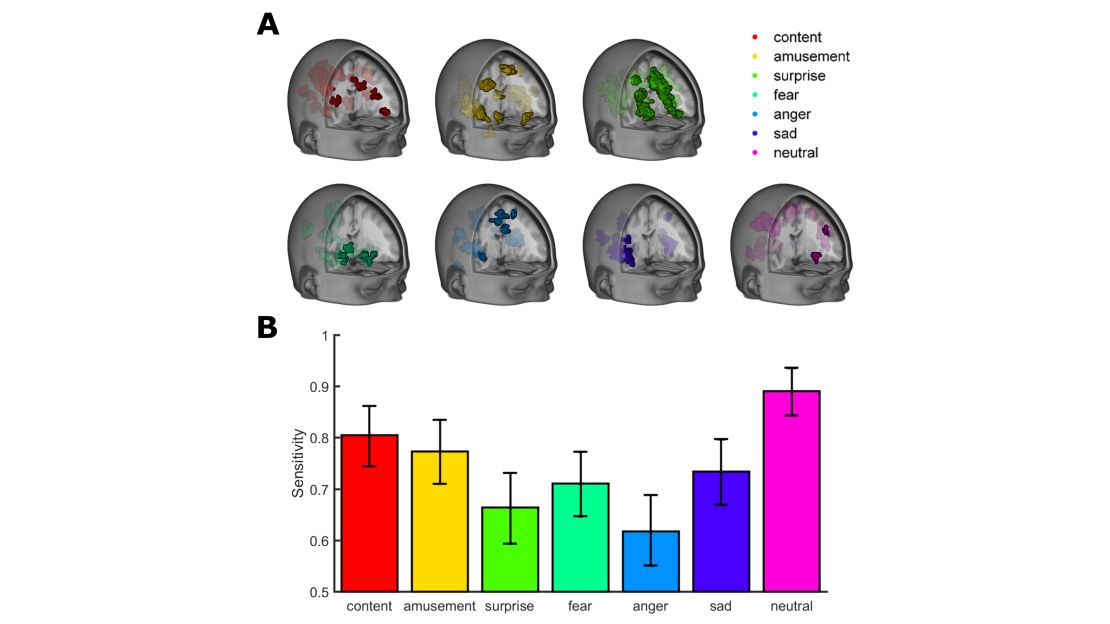Story highlights
Our brains are active with spontaneous emotion when at rest, according to a new study
Study author: Scans for emotions could help those with anxiety, depression and other disorders
When you think you’re letting your mind wander for a few minutes, your brain is actually lighting up with a range of emotions, according to a new study.
Researchers at Duke University’s Center for Cognitive Neuroscience asked study participants to rest and think about nothing in particular while inside a scanner, like patients would for an MRI. They observed the peaks and dips of spontaneous emotions passing through the brain like clouds.
“When people are letting their minds wander is when certain affective states can creep in, and it’s a time when we can ruminate on prior stressors or we can get anxious about future events,” said Kevin LaBar, study co-author and head of the university’s neuroscience program.

“We just had no way of tracking that phenomenon. Part of our interest was that a lot of our emotional life happens when our mind is not focused on a task and is just idling, yet we don’t have a good traction on what are those emotions and how long they last.”
The research came about because assessing the emotional status of a patient in a clinical setting relies on self-reporting as the gold standard, LaBar said. But in certain cases, people are socialized not to reveal how they feel, such as male war veterans with post-traumatic stress disorder, he said.
“We tend to just ask people how they feel and take that at face value. I think that both for treatment of clinical disorders as well as just basic research, we wanted to try to see whether we come up with more objective ways of measuring emotions. In other cases, like in autism, the social communication problems prevent us from really understanding what their emotional life is like.”
The researchers used biomarkers determined by previous studies to observe a dominant range of emotions from positive to negative: content, amusement, surprise, fear, anger, sadness and neutral. The previous studies relied on inducing emotions using film or music clips.
LaBar noted that more nuanced emotions like jealousy are harder to induce or study.
The first emotion the researchers encountered with the majority of participants entering the scanner was fear, even among those who didn’t report feeling claustrophobic. This typically lasted for 20 to 30 seconds before transitioning to another emotion.
Neutral states occurred the most often, followed by surprise and amusement, according to the study. Feelings of sadness, fear and anger happened less often, with contentment as the least observed emotion. The researchers also noted that the state of fear decreased over timespent in the scanner, giving way to an increasing trend of neutral states.
But the prevalence in certain biomarkers and emotion patterns also matched up with those who had anxiety or depression or who identified anger as one of their primary personality traits. Those with depression showed more of the sad biomarker, those with anxiety had a larger presence of fear, and as expected, those with the anger trait also showcased the anger biomarker most.
LaBar believes that being able to identify specific associations of emotions with these disorders could be most beneficial when tracking treatment.
“If we compare the brain scans of people before and after treatment, we can determine whether their resting-state emotions change at the function of that treatment. Somebody who is being treated for depression might feel better or say that they feel better, but if we see that the presence of sadness in their resting state scans is the same or doesn’t really change that much, it may suggest that the person may be more vulnerable to relapse following the treatment.”
Join the conversation
LaBar thinks that this type of scan would be practical and helpful in a clinical setting to evaluate emotions because it relies on observing, rather than inducing. This means that it is also relatively quick, only taking about 10 minutes.
This could also be applied to see whether emotion patterns change in children as they age, used for those with mental disorders such as schizophrenia who claim to feel differently than what they are experiencing, or even used for individuals in a vegetative state to determine whether they are still experiencing emotions within a coma.
“There are some people who really feel that everybody reasons about emotion in a different way and that there shouldn’t be any consistency in the emotional life across individuals,” LaBar said, “But what this is showing is that with more sophisticated brain-imaging techniques and computing techniques, we can pool some commonalities across the emotional life of people even if they have very different experiences in their life and very different propensity to self-report their emotions.”




